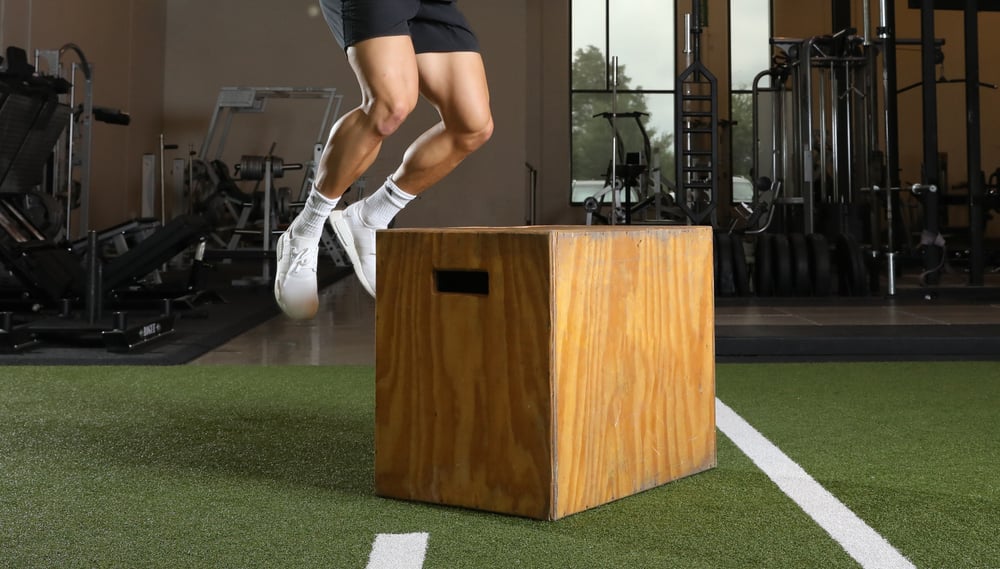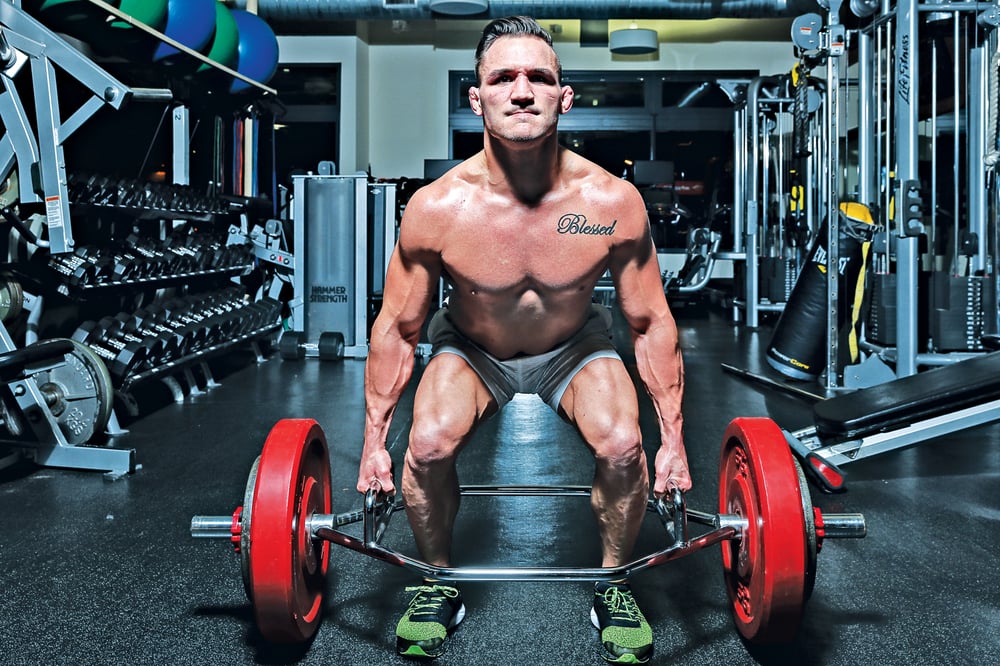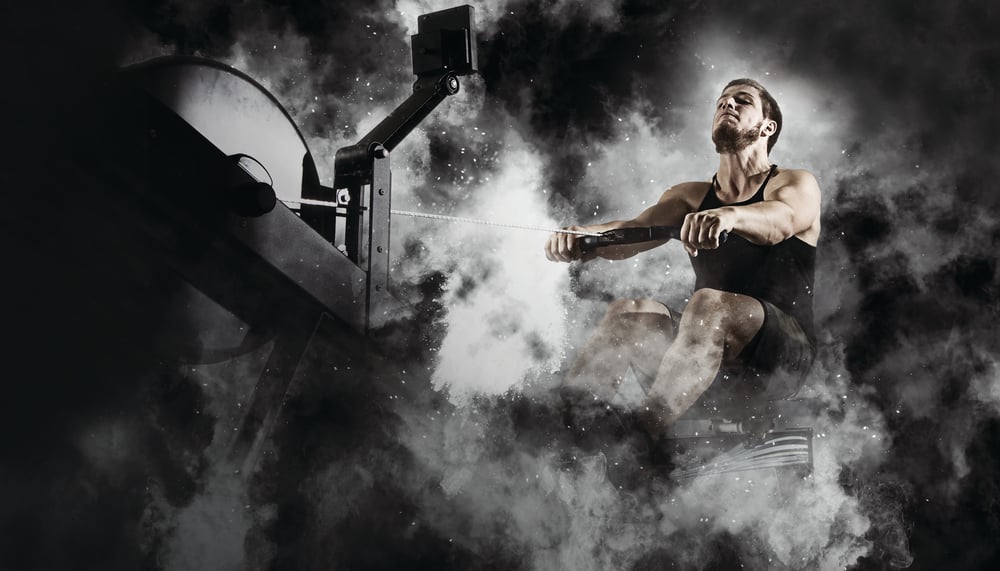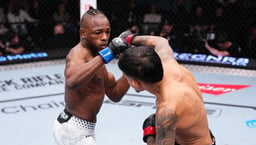
Issue 215
March 2025
Ray Klerck cracks open the playbook on why explosive legs and anaerobic gas tanks separate winners from wannabes.
Even if you can have scalpel-sharp striking, no amount of technique will save you if your body moves like an overloaded shopping cart as the rounds progress. The greats knew it. GSP. Benson Henderson. Mirko Cro-cop. And they had the leg power and size to show it. Whether you're launching into a takedown, blasting a head kick, or scrambling out of a bad position, your lower body is the unsung hero behind those highlight-reel moments. But while skill and technique dominate fight narratives, science is putting numbers behind what truly fuels MMA dominance. A 2025 study in the journal Revista de Artes Marciales Asiaticas has done something no research has attempted before: analyzing the lower body neuromuscular performance and anaerobic capacities of amateur MMA fighters to predict who thrives in the cage and who gets left to eat shots for breakfast. Their findings? Jumping power is a victory cheat code for women. Anaerobic endurance means victory for both men and women. Turns out, gendered physiology shapes fight outcomes in ways most coaches haven’t considered. Surprisingly, both male and female fighters lag behind non-combat athletes when it comes to explosive leg power. Yep, your average soccer star might be out-jumping and outlasting many MMA elites. And if that doesn’t sound like a wake-up call, you might already be unconscious. Let’s break down why fixing these gaps could be the key to racking up more wins.
POWER TO THE PEOPLE (WHO JUMP HIGHER)
For female fighters, victory isn’t necessarily dipped in the ink of experience, cardio, or even striking accuracy. It’s hiding in their vertical leap. The study found female fighters with better squat jump, countermovement jump (CMJ), and CMJ with an arm-swing scores had significantly higher win rates. Countermovement jump (CMJ) performance alone was 79% predictive of success, meaning the ability to launch off the ground is nearly as reliable as a fighter’s record in determining whether they’ll come out on top. Add an arm swing (CMJ-AS) to the jump, and the predictive power holds at 72%, reinforcing the idea that dynamic power beats static strength when the cage door shuts. Even the squat jump (SJ) on its own is 71% predictive, a figure that suggests if you struggle to generate force from a standstill, you’ll struggle to dominate in competition, too. Those numbers are huge. In sports science, those numbers practically scream, "This is very important!" So, if you can jump high, you’re more likely to get your hand raised. Lower body power fuels the explosiveness that makes a fighter terrifying. This translates to faster takedowns, more force behind strikes, and quicker get-ups from the mat. A high-flying countermovement jump means stronger legs, a snappier kinetic chain, and a better ability to generate fight-ending power. You might be short-changing your potential if you’re a female MMA athlete and do not regularly do plyometrics, Olympic lifts, and jump training. Either start jumping now, or accept that someone else, probably someone with a better vertical, will be leaping away with the W instead.

MEN WIN WITH THROWS, NOT VERTICAL LEAPS
And the men. They’ll do better for sure, right? Well, not so much. For male fighters, raw power wasn’t the ringmaster for victory. Gut-wrenching anaerobic endurance was. The study found MMA success was over 73% linked to the ability to keep throwing under exhaustion, as measured by the Special Judo Fitness Test (SJFT). In simple terms? The men who could still throw hands when their lungs begged for mercy, and their legs felt like cement shoes won more fights. It’s the success marker used by weapons like Merab Dvalishvili and is anaerobic cardio kryptonite to folks like Derrick Lewis. This isn’t just a niche insight for fight nerds (who, let’s be honest, are killing it right now). It’s a wake-up call for MMA training. Fighters spend hours drilling techniques, but it's all wasted if their anaerobic gas tank can’t keep up. The ability to grind through fatigue matters more than brute strength. Here’s the kicker: MMA athletes of both genders in the study scored poor to very poor on anaerobic endurance. That’s a serious gap in conditioning for a sport built on high-output bursts. It’s something that fighters like Nate Diaz and GSP have always known training needs to prioritize lactic threshold work, explosive throws, and high-rep power circuits.
DRIVE EXPLOSIVE POWER INTO YOUR LEGS
Suppose you want to build fight-finishing explosiveness in your legs. In that case, the research is as deniable as a stiff to an unguarded chin - certain exercises deliver knockout-level power, while others just fill time. What are the top-tier science-backed movements for lower-body explosiveness? Squat jumps. Loaded countermovement jumps. Trap bar jumps. A study found squat jumps maximize the rate of force development, meaning they train your muscles to fire off like a bullet rather than a slow-burning fuse. Countermovement jumps with load are also a winner because an 8-week study found both Accentuated Eccentric Loading Countermovement Jump and drop jump training significantly improved vertical jump height (up to 11.8%) and lower body strength (up to 8.4%). Trap bar jumps, as supported by a study in the Journal of Human Kinetics, allow athletes to generate maximal lower body force with minimal joint stress, making them a safer but equally effective alternative to traditional Olympic lifts. If you want a MMA-specific edge, try testing yourself with the same jump and anaerobic fitness tests used in the recent MMA study. If your results are as underwhelming as the research suggests most amateur fighters were, it’s a wake-up call. Train for power or risk being the nail, not the hammer.

TEST IF YOU NEED MORE ANAEROBIC ENDURO
If your anaerobic endurance is garbage, it doesn’t matter how crisp your jab is. Your body will betray you when it counts. The study made it clear: fighters with better short-burst endurance win more fights, yet most amateur MMA athletes scored poor to very poor in this area. So how do you fix it? You train for the reality of MMA: repeated, high-intensity efforts with minimal rest. Any good coach will prepare you for this, but you can test yourself using this protocol. The Special Judo Fitness Test (SJFT) is a brutal but reliable way to assess anaerobic endurance. It simulates fight-specific fatigue and measures how well you can sustain the explosive effort. Here’s how it works:
What You'll Need
Two partners
A stopwatch
A heart rate monitor
The Test Protocol
The SJFT has three work periods (phases), where you complete as many explosive throws as possible on your partner within the given time. Your partner remains passive. You're just focusing on maximum effort execution.
Phase 1: 15 Seconds (Maximum Effort)
Begin standing at the center between two partners positioned 6m apart. Sprint to Partner A, and execute one explosive throw (Uchi Mata, Seoi Nage, or an MMA equivalent like a Greco-Roman throw). Immediately sprint to Partner B and perform the same throw.
Repeat this back-and-forth as many times as possible in 15 seconds, then rest for 10 seconds
Phase 2: 30 Seconds (Sustained Output)
Repeat the same drill for 30 seconds, focusing on maintaining fast, explosive throws, then rest for 30 seconds.
Phase 3: 30 Seconds (Fatigue Phase)
Push through another 30-second round of maximum-effort throws. Your goal is to maintain output despite fatigue setting in.
Scoring and Interpretation
Count the total number of throws across all three phases. Immediately measure your heart rate at the end of the final phase. Measure your heart rate one minute later (recovery score). The SJFT Index formula is simple: take your heart rate immediately after the test, subtract your heart rate one minute later, and divide that number by your total number of throws. The lower your score, the better your anaerobic endurance and recovery. This means you can keep throwing, scrambling, and attacking without hitting the dreaded lactic wall. If your score is high, it’s a red flag that your conditioning needs work because once fatigue sets in, your ability to win exchanges plummets.

TRAIN SMART OR GET LEFT BEHIND
If the science says jump, you jump. If the data says throw until your lungs scream, you listen. The study makes it clear that lower body power and anaerobic endurance are the invisible hand steering the outcome of many amateur fights. Female fighters should prioritize jump training like it’s their ticket to the top because, statistically, it is. For men, the ability to keep firing off explosive throws deep into fatigue is the single biggest factor in winning fights. Yet, the shocking takeaway is that most amateur fighters are miles behind non-combat athletes in these key areas. That means MMA conditioning has blind spots, and those willing to address them have a clear advantage. So, if you’re not already testing your jump height and anaerobic capacity, start now. Fix the gaps, train explosively, and condition yourself to keep pushing when the other guy fades.










